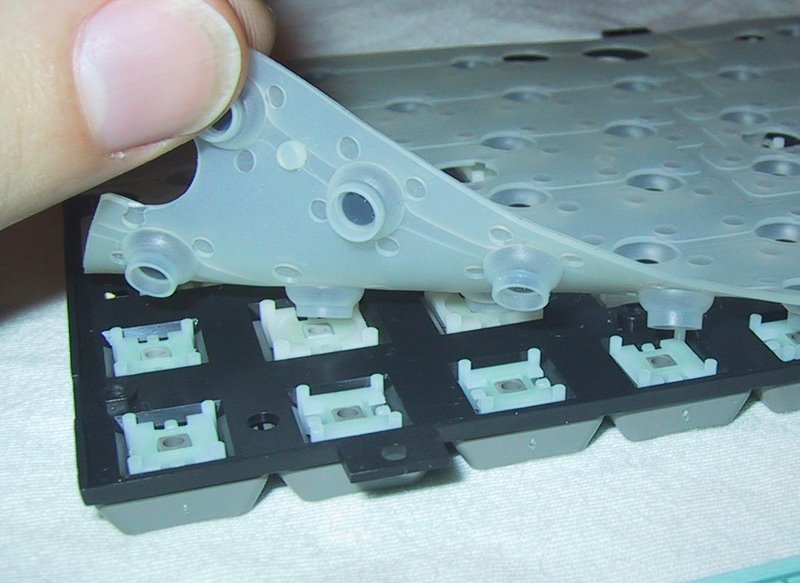Exactly How Membrane Changes Add To the Toughness of Electronic Control Panels
Membrane layer buttons play a critical function in boosting the sturdiness of digital control panels, mainly with their multi-layered construction which offers effective protection against environmental aspects such as moisture and dirt. The lack of relocating components dramatically reduces the likelihood of mechanical failings, making membrane switches over suitable for requiring applications.
Definition of Membrane Buttons

Membrane layer buttons are created to be thin and light-weight, making them appropriate for applications where room is restricted. They can be produced in various shapes, dimensions, and shades, using flexibility in style that satisfies visual and practical requirements. Furthermore, membrane buttons can incorporate numerous technologies, such as responsive comments and LED indications, enhancing customer experience.
As a result of their construction, membrane layer switches are usually immune to dust, wetness, and general wear, contributing to their resilience sought after settings. Their seamless layout not only facilitates very easy cleansing yet additionally minimizes the danger of mechanical failure, making them a favored option for makers looking for dependable interface in their electronic control board.
Protection Versus Environmental Elements
The design of membrane layer switches naturally offers a level of defense against various ecological variables, which is important for maintaining functionality in challenging conditions - Membrane Switch. These buttons are usually created with layers of versatile materials that shield interior components from dampness, dirt, and impurities. By encapsulating the wiring, membrane switches decrease the risk of brief circuits and corrosion, which can significantly harm efficiency
Furthermore, using durable adhesives and sealants during manufacturing boosts their resistance to ecological obstacles. Membrane buttons can endure exposure to chemicals and solvents, making them appropriate for industries such as food processing and healthcare, where health and tidiness are extremely important. Their smooth surface area design likewise protects against the build-up of dirt and bacteria, facilitating much easier cleansing and maintenance.
Temperature level variations are another ecological issue, and membrane layer switches are engineered to operate successfully throughout a large array of temperature levels (Membrane Switch). This adaptability ensures that control board continue to be operational in various setups, from commercial environments to customer electronic devices
Impact on Individual Communication
User interaction with digital control board is dramatically affected by the style and capability of membrane layer switches. These buttons provide a tactile user interface that enhances the general customer experience, enabling instinctive navigation and control. Their responsive nature ensures that users obtain prompt feedback upon activation, which is important for jobs requiring precision and efficiency.
Moreover, the smooth surface area of membrane switches promotes very easy cleansing and upkeep, promoting customer confidence in the reliability of the interface. This cleanliness is particularly important in environments where hygiene is extremely important, such as clinical or food handling settings. In addition, the portable and light-weight style of membrane changes adds to the visual appeal of control panels, encouraging customer involvement via a contemporary and streamlined look.
Moreover, the assimilation of aesthetic elements, such as printed symbols and backlighting, assists individuals promptly identify functions, reducing the finding out contour connected with new devices. Because of this, users can run gadgets much more click for more successfully, leading to raised performance and contentment. In summary, membrane buttons play a pivotal function in enhancing customer interaction by incorporating performance, aesthetics, and simplicity of use, ultimately causing improved functional effectiveness.
Design Adaptability and Customization
Layout versatility and modification are necessary aspects of membrane layer switches, making it possible for producers to customize electronic control board to specific applications and individual needs. This versatility permits the combination of numerous design components, such as colors, graphics, and appearances, which can boost the visual appeal and individual involvement of the control board.
Membrane switches can be customized in dimension and shape, fitting a variety of gadgets and applications, from commercial equipment to consumer electronics. This convenience makes sure that manufacturers can create instinctive user interfaces that align with user assumptions and functional demands. Additionally, the ability to integrate special features such as backlighting or tactile comments additionally enhances use, enabling an extra interactive experience.
Furthermore, the manufacturing procedure for membrane layer switches over sustains the rapid prototyping of styles, enabling producers to iterate and fine-tune their ideas swiftly. This capacity not just increases the growth timeline yet additionally makes certain that the end product meets specific functional and visual criteria.

Cost-Effectiveness and Long Life
Cost-effectiveness and long life are substantial benefits of membrane switches, making them an attractive option for suppliers and end-users alike. These buttons are commonly more economical to produce than traditional mechanical buttons, largely as a result of their simplified manufacturing procedures and the lowered variety of components required. This price advantage extends not just to preliminary production but additionally to long-lasting operational expenditures, as membrane buttons usually require less upkeep and have a reduced failing price.
In addition, the long life of membrane switches adds to their overall worth. Built from durable products, they are resistant to ecological elements such as dampness, dust, and chemicals, which can lead to early wear in other button kinds. The absence of relocating parts reduces mechanical click failure, enabling membrane switches over to maintain capability over extended durations.
This sturdiness is particularly helpful in applications requiring constant performance under demanding problems, such as medical gadgets and commercial equipment. Eventually, the mix of cost-effectiveness and longevity makes membrane layer switches an economically sensible choice for makers, giving reputable remedies that endure the examination of time while optimizing monetary factors to consider.
Conclusion
In final thought, membrane buttons significantly boost the sturdiness of electronic moved here control panels with their robust building and safety functions - Membrane Switch. On the whole, membrane changes represent a trusted and cost-effective option for boosting the longevity and capability of electronic control systems.